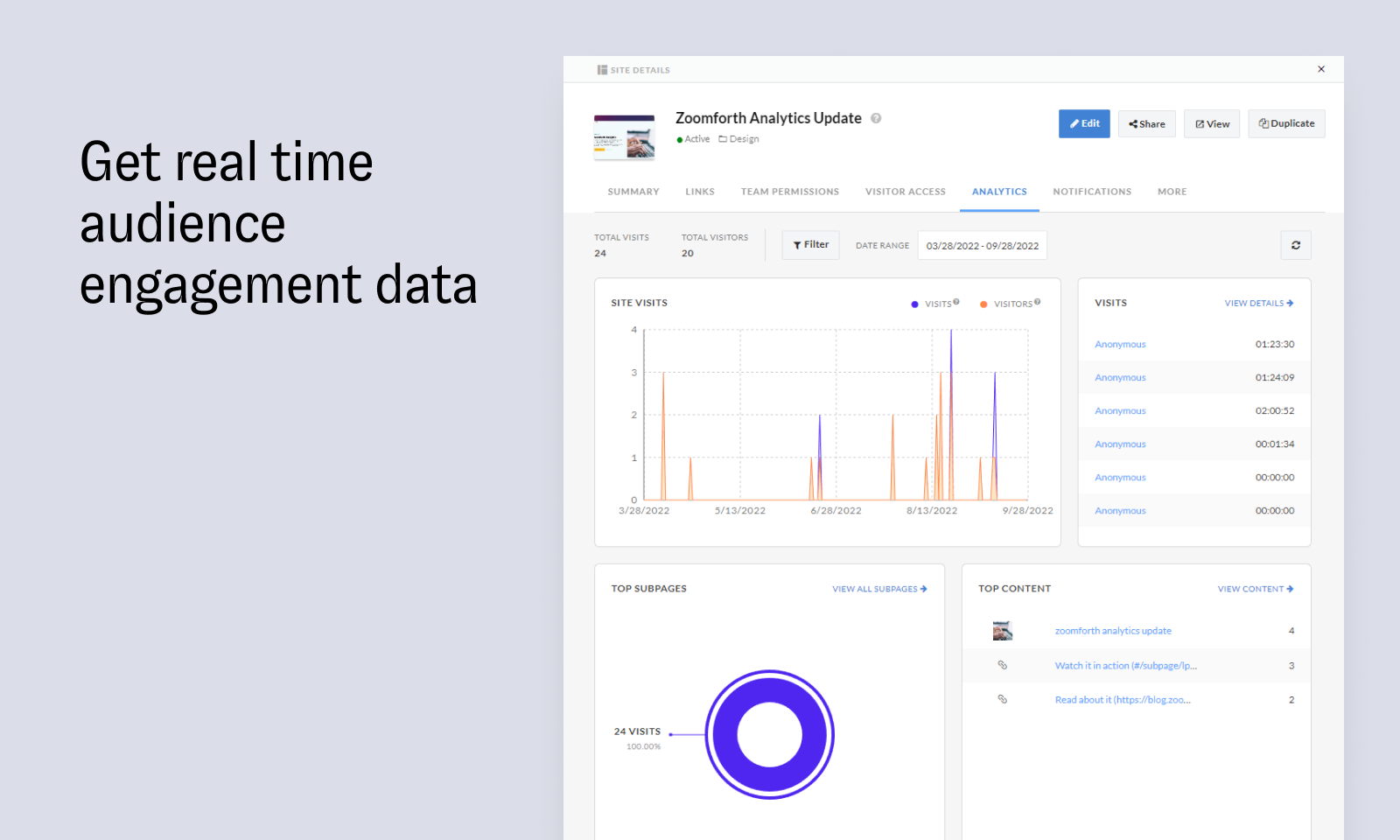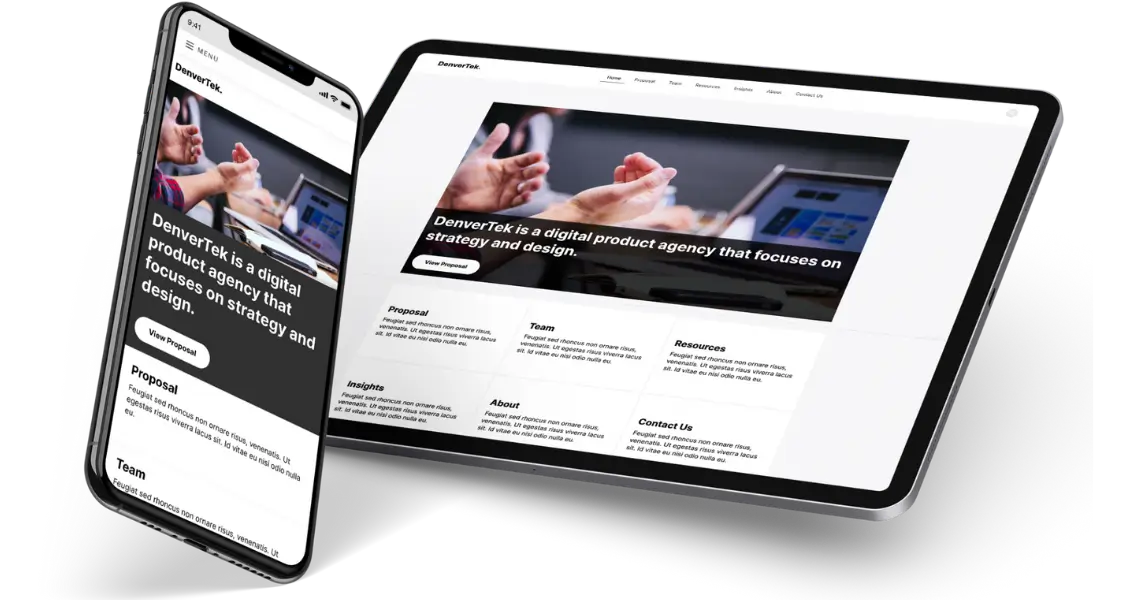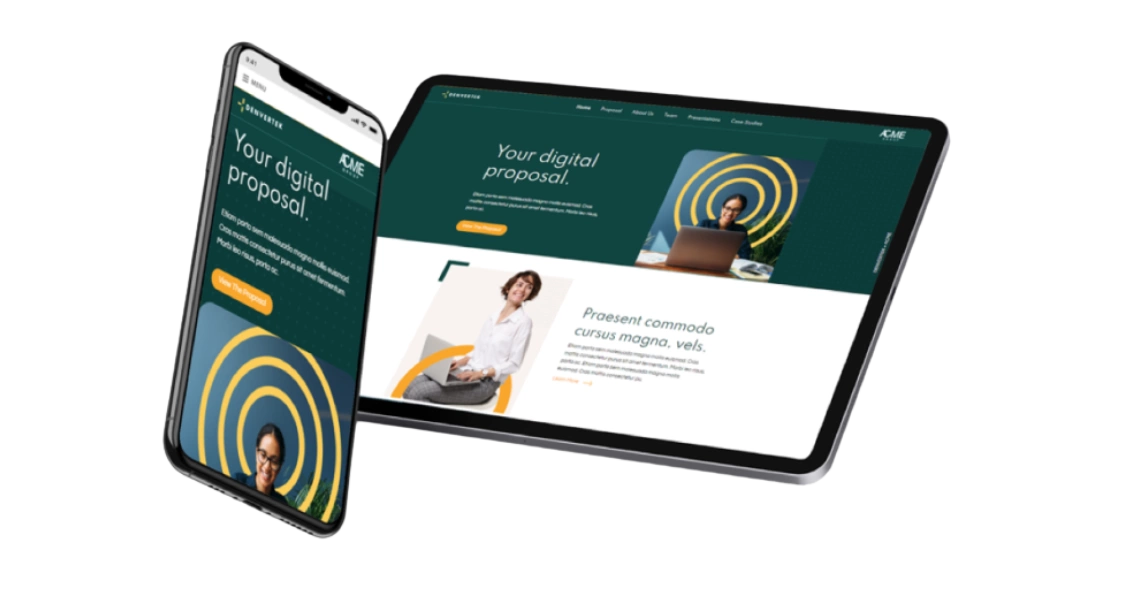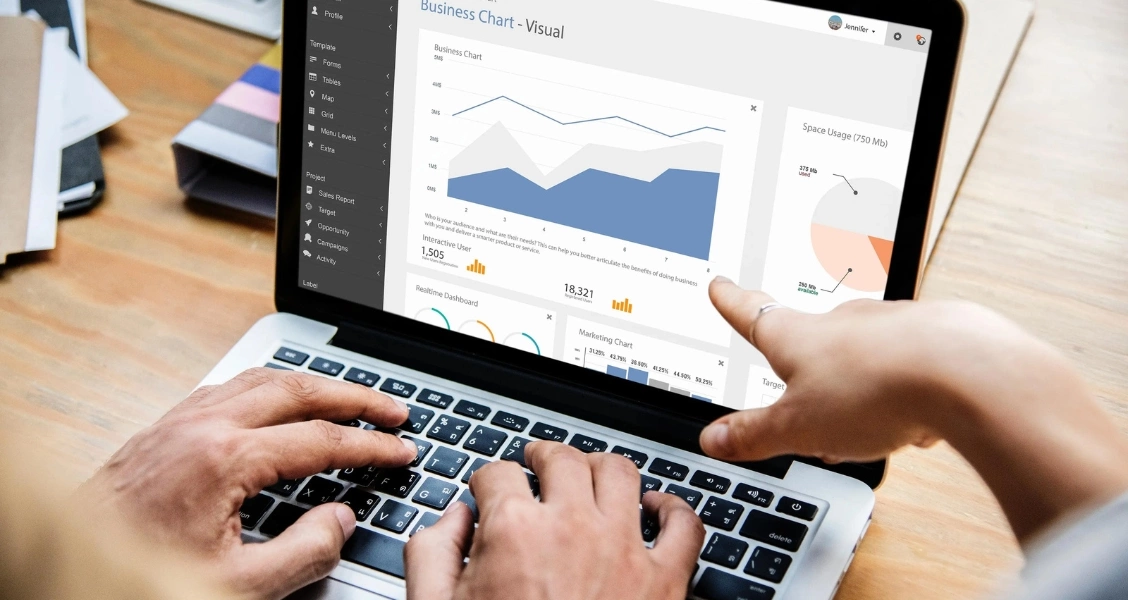Have you ever had that great sales opportunity that came through the pipeline and looked oh-so-promising? Did you ever watch in dismay as your bid went totally ignored and was won by the competition?
If the answer to those questions is yes, then you may have wished that you had a sidekick called content analytics.
Content analytics can take your bid win rate to the next level. In this blog post, we’re going to take a look at the advantage that this kind of customer engagement data can bring to RFP response writing. Once we’re done, you should be in a better position to understand why and when it makes sense to back a static document with a living online resource.
The problem with traditional bidding formats
When it comes time to enter a bid, the format that most writers reach for is the tried and trusted Word or PDF document. This is typically used to convey longer bids. Occasionally, a presentation built in Powerpoint or equivalent software is the favored approach.
While it’s certainly possible to craft very engaging bids using these media, ultimately there’s one glaring problem: neither yield any data. And in today’s data-driven climate, that’s often considered unacceptable.
In fact, minus tracking open rates and downloads (both of these are possible) you’re going to be none the wiser as to how your target readership–the bid committee—has engaged with your proposal. You won’t know whether they’ve read it. How many times they’ve read it. Or what parts of the proposal they found the most engaging. So long as this is the case, you’re going to be flying blind.
And there are two problems with flying blind:
- In all likelihood, you’re trying to get better and win more bids over time – iterative improvement may even have been baked into your KPIs. If you don’t know where you’re succeeding and failing then that iterative process becomes challenging
- Not only does this make it challenging to improve on future bids, you don’t receive any data about whether this proposal was so much as opened. The deeper the bidding process goes, the more this can become a problem. For instance, if you progress all the way until the award stage of the proces, you may still have no clues as to which members of the purchasing committee are your internal sponsors and which have yet to even engage with what you’ve proposed.
If you’re looking to develop a better RFP sample and elevate how you respond to request for proposal opportunities with better results then you should consider using something like a microsite generator to yield more useful information.
By sending in your bid as a microsite, or by using a microsite to showcase supplementary material, not only are you demonstrating that your firm embraces newer ways of doing things, you’re also creating a living web resource with baked-in analytics that will allow you to study the engagement levels on every proposal that you send out. This creates a new tranche of data that your team can use to bid on future opportunities more effectively.
To learn more about Zoomforth’s analytics capabilities, click here.

What kind of analytics can I collect using Zoomforth?
With Zoomforth you can wave goodbye to data-less presentations. In fact, every single bid you send out as a microsite can be a data-magnet, swooping in all sorts of engagement metrics every time the bid-issuer engages with it.
Zoomforth uses its own syntax to log and record engagement data. These include:
- Visits which occur whenever somebody lands on your microsite.
- Visitors that access your site.
We also present you with detailed data so that you can get a more granular feel for how your site is performing. You can access a daily visitor count as well as top content summaries. Together, these will give you a much richer insight into whether and to what extent your target readership engaged with your bid.
How can heightening your data game help you win more business and land more bids?
Let’s drill down a little bit into how you can take data and convert it into actionable insights that can help you win more bids. Each of these chunks of information can be collected through Zoomforth without you needing to set up anything customized – it all works out of the box.
Who looked at your proposal
Perhaps the most valuable piece of analytical data that our clients find instrumental is knowing who looked at your proposal. Knowing who read your proposal can make the process of identifying internal sponsors and opponents that much easier. As you continue through the bidding process, you’ll have to work to address any unvoiced objections coming from the doubters and convince those who are on your side that you really have what it takes to deliver on the project.
When they looked at your proposal
Zoomforth also allows you to keep tabs on when your proposal microsite was accessed. It can be very useful to identify repeat interest from certain users as, again, this can signal heightened levels of engagement. Additionally, it can help you identify lags in momentum. If your bid was viewed a few times over the course of a day but nobody’s touched it since – a reminder could be very useful.
Who they shared it with and what that person looked at
Zoomforth can also collate data on internal sharing activity. When internal stakeholders at the company pass on your microsite, this can signal that your bid is under active evaluation. But there’s so much more that you can learn. You’ll also want to keep track of what information those readers engaged with. Putting the two together can help you to identify internal pools of support at the organization.
What they missed
Don’t forget that zero views is a form of data too! You’ll want to pay attention to the parts of the microsite that were viewed, which were viewed most actively, and which were not viewed at all. The last of these is particularly important as it can help you to focus your energies on highlighting parts of the proposal that slipped through the gaps.
Which pages proved most popular
On the flip side, you’ll be able to determine which part of the site proved to be the most popular. And which saw the least engagement. Again, by establishing which parts of the site readers engaged with, you’ll have an easier time identifying what worked and what you can do more of next time.
How far through the deck they got
The bounce rate is a crucial metric in website analytics. With Zoomforth, you’ll be able to see how deep into the site hierarchy they made it before clicking away. Knowing this exit point is a valuable piece of data. You can focus your efforts on making this section more engaging.
Don’t forego the data advantage when you’re next bidding
Next time you’re bidding on a project, consider sending a microsite rather than a presentation. While presentations are tried and trusted vehicles for conveying a lot of information quickly, they don’t tend to be the most effective or engaging format for recipients. Additionally, you do yourself out of a treasure trove of data whenever you use them. By heightening your technological game you can leverage more data and win more bids.
Learn how Zoomforth’s data analytics suite can give you a head start on your competitors, request a demo here.



